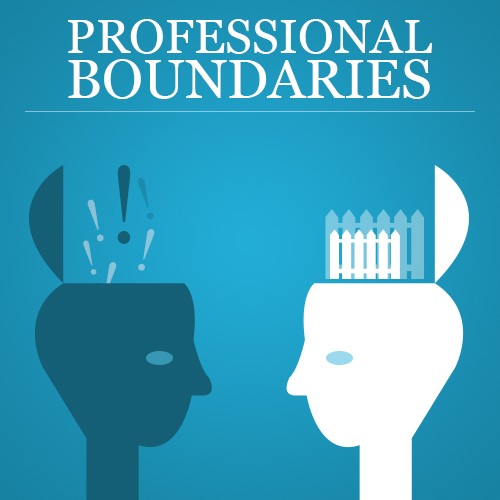Safe Professional Boundaries

About the Course
In this self-directed online learning package produced by Davaar Consultancy. there are 15 units filled with short videos, models, theories, reading materials, and reflective questions.
By completing this course you’ll increase your self-awareness and understanding of the complexities and importance of professional boundaries. Professional boundary transgressions can occur in any profession and in many workplaces. Historically discussion on professional boundaries has focused on the relationship between health professionals and patients. Contemporary experiences, however, highlight that boundary transgressions can occur between teachers and students (across all levels of education), police officers and community members, in the defense services, in sport, and anywhere that a power dynamic may exist.
The language used in this tool is predominately healthcare-related and thus questions posed refer to, for example, the nurse and the client. We envisage that no matter your profession, you will gain much from completing this package. If you insert words specific to your professional role i.e. rather than nurse and client, you insert teacher and student, or trainer and trainee, then the questions will better resonate with you. Similarly, if the setting mentioned is healthcare you could change it to be the setting specific to your workplace.
Tune into our Professional Boundaries Podcast for extra content, and scenarios and strategies for setting and repairing Professional boundaries: https://davaar.com.au/pbpodcast/ Professional boundary transgressions occur along a continuum between over- and under-involvement with clients (and or their families). The transgressions can be either crossings or violations, or both.This tool will introduce you to a number of concepts significant to understanding the complexity that is professional boundaries.
Several themes will be covered including:- Definitions
- Warning signs
- Self-awareness
- Roles we play
- Conflicting expectations of stakeholders
- Frameworks that provide explanations for boundary transgressions
- Cost of boundary transgressions for clients and the professional (and their families)
- Strategies and interventions at an individual, collegial and organisational level
- Reasons for boundary transgressions including - intrapersonal, interpersonal, and systemic
- Boundary transgressions with colleagues
- Identify warning signs that a boundary transgression has happened/is about to happen
- Discuss and demonstrate an understanding of the definitions specific to professional boundaries
- Identify and discuss a broad range of factors that increase the risk of boundary transgressions occurring
- Identify the organisational (in which you work) perspective and responsibilities for ensuring staff are supported in maintaining professional boundaries
- Recognise when a colleague may be at risk of boundary transgressions
- Identify strategies to manage professional boundaries for self and for a colleague
- Demonstrate an understanding of the boundary framework and categories of concern
- Demonstrate an understanding of frameworks (described in this package) that provide explanations for boundary transgressions
Without limiting the rights under copyright, no part of this publication (including without limitation; the text, code, artwork, photography, images, music, audio or video material, and audio-visual material in this training) may be reproduced, stored in, or introduced into a database and retrieval system or transmitted in any form or any means (electronic, mechanical, photocopying, recording or otherwise) without the prior written permission of the copyright owners - Davaar Consultancy, Training and Development Pty. Ltd. or when applicable, the referenced author or producer of supporting materials. All rights reserved. By purchasing access to this training tool, you agree to these terms and conditions. Please note: For live virtual workshops and in-person workshops when possible, visit our other website: https://davaar.com.au
Course Structure
- Intro - Overview, FAQs & References
- Unit 2 - Self Assessment & Historical Influences
- Unit 3 - Definitions
- Unit 4 - The Professional Boundary Framework
- Unit 5 - Categories of Concern
- Unit 6 - Stakeholders
- Unit 7 - Costs
- Unit 8 - Warning Signs
- Unit 9 - Reasons for Boundary Transgressions
- Unit 10 - What to Do - Strategies
- Unit 11 - Organisational Responsibilities
- Unit 12 - Revisiting Units 2-11 with Case Scenarios
- Unit 13 - Working with Colleagues
- Unit 14 - Revisiting Strategies
- Unit 15 - Understanding the Transactions in the Roles
- Final Assessment
